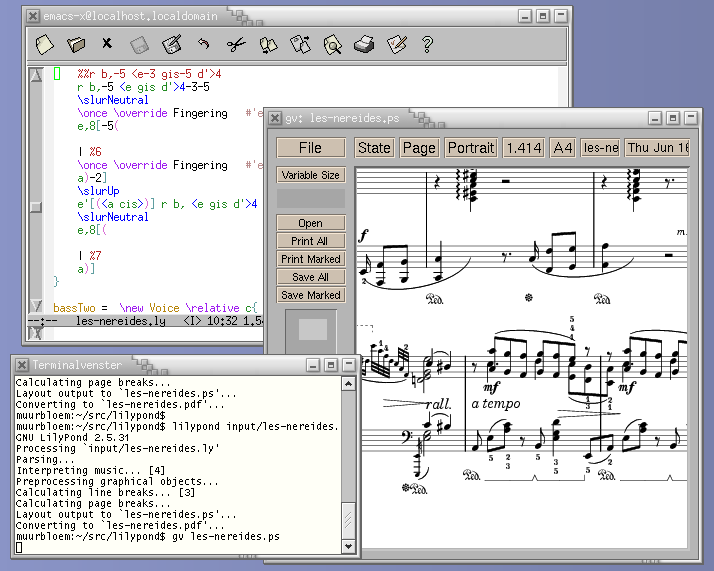

On a score, you could add tempo markings to the top staff, and it will look fine.

Where I usually run into trouble is taking out measures and adding text across all instruments. I tend to print out that draft, mark it up in red pen, then enter my edits. I always sketch by pencil beforehand, then enter the notes all at once. Writing directly in LilyPond would be a pain. Ties are ~ and slurs are ( ) LilyPond is for engraving, not for composing Articulations are a hyphen and a similar glyph. Natural notes are just their letter names. I think I’m just as fast typing in notes by text than I was when I typed in notes on Sibelius. That may sound cumbersome, but it’s not, necessarily. You can’t click on a staff and make a note. Let me reiterate: LilyPond is a markup language, so it works very differently than Finale, Sibelius, Dorico, MuseScore, etc. (Say hi in the comments if you use LilyPond!) How do you use LilyPond? I hear less and less about Lilypond these days I think it’s mainly used by computer geeks who dabble in composition, rather than composers who dabble in computer geekery. The visual appearance is the selling-point for this free software. This is less of a “notation program” than a “markup language” like HTML or LaTeX, and it creates really beautiful-looking music. In 2012 or so, I went really contrarian and started using the free platform LilyPond.
#Lilypond software how to
Yet, I’ve taught students how to use Finale several times… A software contrarian I felt that Sibelius was more intuitive than Finale, and stuck with that. I’ve been a contrarian in these “debates” (scare quotes fully intentional). The original Sibelius team moved on to create Dorico, which seems to be a popular growing upstart. Now that Sibelius has been incorporated into AVID (which owns Pro Tools and other programs), I see the name less. Doricoįor many years, one of the main “debates” for composers was Finale vs.


 0 kommentar(er)
0 kommentar(er)
